31 Using A Microscope Worksheet
ACTIVITY 1: Getting to Know Your Microscope. 1. Individually, get the combination from the instructor for your microscope drawer. 2. Open combination drawer and take out the microscope. 3. Label all the parts of the microscope with the provided post-its using the image below or the laboratory manual. Note. Microscope Skills #1: How to Use a Microscope | Printable & Distance Learning. Updated for distance learning. This resource comes in three versions (with full answer keys): 1) Editable Word Documents 2) PDFs and 3) Google Slides where students can type directly into text boxes.
Measuring with the microscope can be a frustrating endeavor for beginner biologists. In fact, I rarely teach measuring in my freshman classes. Advanced (AP) biology does look at how to measure with the microscope. The entire process involves focusing on high power, using math to solve a ratio problem, and in the end making an estimation of the field of view of your microscope.

Using a microscope worksheet
or light microscope (vs./ an electron microscope). The simplest optical microscope is the magnifying glass and is good to about ten times (10X) magnification. The compound microscope has two systems of lenses for greater magnification, 1) the ocular, or eyepiece lens that B. NOSEPIECE microscope when carried Holds the HIGH- and LOW- power objective LENSES; can be rotated to change MAGNIFICATION. Power = 10 x 4 = 40 Power = 10 x 10 = 100 Power = 10 x 40 = 400 What happens as the power of magnification increases? Name _____ Compound Light Microscope. Using a Microscope. In this worksheet, students will review their understanding of how to use a microscope, what can go wrong and how to measure specimens. Key stage: KS 3.
Using a microscope worksheet. Label the parts of the microscope. You can use the word bank below to fill in the blanks or cut and paste the words at the bottom. Microscope Created by Jolanthe @ HomeschoolCreations eyepiece head objective lenses arm focusing knob base illuminator stage stage clips nosepiece. Created Date: 20130903081813Z Displaying top 8 worksheets found for using a microscope. The usage of phonics worksheets will simply raise the learning practice. Parts Of A Microscope Worksheet Pin On Anatomy Physiology In 2020 Microscopic Worksheets Quiz Names The study of living things. Microscope worksheet answer key. Can be rotated to change magnification. A microscope can you identify. […] Proper Use of the Compound Light Microscope Exercise 1B - Steps to follow when using the microscope If you really want to be able to see a specimen on a slide, you must follow the steps on the next page every time you look at a new slide. The microscope will be your friend if you always use the following steps in their proper order.
Using the Compound Light Microscope: 1. Always carry the microscope by holding the arm of the microscope with one hand and supporting the base with the other hand. "2. Place the microscope on a flat, sturdy surface. The arm should be positioned toward you. "3. Look through the eyepiece(s). Adjust the diaphragm so that the light comes through the In this lab, we will learn about the proper use and handling of the microscope. Instructional Objectives. Demonstrate the proper procedures used in correctly using the compound light microscope. Prepare and use a wet mount. Determine the total magnification of the microscope. Explain how to properly handle the microscope. The compound microscope has two systems of lenses for greater magnification 1 the ocular or eyepiece lens that. Displaying top 8 worksheets found for using a microscope. Flossmoor school district 161. Microscope parts and use worksheet answer key along with labeling the parts of the microscope blank diagram available for. Created Date: 9/26/2016 5:37:27 PM
Arm - portion of microscope that connects the body to the base Base - a stable bottom for the microscope to stand upright (not labeled) Iris Diaphragm - Allows light to settle onto slide 2. $1.00. PDF. This observation activity gives students practice using microscopes, identifying cells and tissues of the human body, and making observations. Students use a microscope to look at six different slides and draw what they see, describe it in words, and make a prediction about what part of the body the. Use the coarse adjustment knob (large knob) to get it the image into view and then use the fine adjustment knob (small knob) to make it clearer. 4 - When you are done, turn off the microscope and put up the slides you used. 3 - Once you have the image in view, rotate the nosepiece to view it under different powers. LAB 3 - Use of the Microscope Introduction In this laboratory you will be learning how to use one of the most important tools in biology - the compound light microscope - to view a variety of specimens.You will also use a slightly different type of light microscope called a stereoscopic dissecting microscope.
Use the coarse adjustment knob (large knob) to get it the image into view and then use the fine adjustment knob (small knob) to make it clearer. 4 - When you are done, turn off the microscope and put up the slides you used. 3 - Once you have the image in view, rotate the nosepiece to view it under different powers.
Using a Microscope. In this worksheet, students will review their understanding of how to use a microscope, what can go wrong and how to measure specimens. Key stage: KS 3.
Some of the worksheets below are Parts and Function of a Microscope Worksheets with colorful charts and diagrams to help students familiarize with the parts of the microscope along with several important questions and activities with answers. Once you find your worksheet (s), you can either click on the pop-out icon or download button to print.
B. NOSEPIECE microscope when carried Holds the HIGH- and LOW- power objective LENSES; can be rotated to change MAGNIFICATION. Power = 10 x 4 = 40 Power = 10 x 10 = 100 Power = 10 x 40 = 400 What happens as the power of magnification increases? Name _____ Compound Light Microscope.
or light microscope (vs./ an electron microscope). The simplest optical microscope is the magnifying glass and is good to about ten times (10X) magnification. The compound microscope has two systems of lenses for greater magnification, 1) the ocular, or eyepiece lens that
Measuring With A Microscope Lab 7. Answer Key Teach Engineering. Answer Key Net Start Class Manualzz. 14 Microscope Parts Powerpoint Worksheet Pdf 1 Name Date. The Microscope Teaching Resources. Microscope Drawing Worksheet At Paintingvalley Com Explore. Lab 3 Use Of The Microscope Pdf Free Download.
Using this quiz/worksheet will be a learning aide by asking you about which types of slides are easiest to prepare, benefits of wetting a specimen before viewing it, slide preservation, methods of.
Microscope Use: 15. When focusing a specimen, you should always start with the _____ objective. 16. When using the high power objective, only the _____ knob should be used. 17. The type of microscope used in most science classes is the _____ microscope. 18.
Benchmark SC.6.1.2 Use appropriate tools, equipment, and techniques safely to collect, display, and analyze data Discuss how to conduct experiments with the plankton net. Discuss data collection methods and questions that students could answer using the equipment. Example: Use the net and microscope to
USING A COMPOUND MICROSCOPE: Before using your microscope, thoroughly clean the oculars and objectives with lens paper. Use a circular cleaning motion to avoid scratching the lens. When using the microscope, keep your eyelashes from touching the ocular:because oil from your lashes will adhere to the oculars and smear them.
Microscope Use: 15. When focusing a specimen, you should always start with the _____ objective. 16. When using the high power objective, only the _____ knob should be used. 17. The type of microscope used in most science classes is the _____ microscope. 18.
Students need to learn how to use microscopes before they come out of the cabinet. These 5 worksheets are a great way to prepare students on how to use microscopes properly. Worksheets include:1. Identifying parts of a microscope2. Using the microscope- students will place the procedures in the corr.
When we use a MICROscope we use MICROmeters. 1000 micrometer (um) = 1 millimeter (mm) One strand of hair = 100 um wide To convert from millimeters to micrometers, move the decimal 3 places to the right. EX: "Field of view"= 1.3mm How wide is the field in um? 1.3mm..
Today, you will use that knowledge to determine how a microscope works. You have two objectives to fulfill by the end of this lab: Properly use and focus a microscope from a low power to a high power objective lens. Determine what happens to the image of a specimen in the microscope. Materials: Microscope. Slide. worksheet. Ruler Procedures.
Quiz & Worksheet Goals. You will be asked to answer questions on: The part of the microscope one looks through to see a bigger image. Which part is used to make small adjustments to the magnified.
Displaying top 8 worksheets found for - Using A Microscope. Some of the worksheets for this concept are The microscope parts and use, Lab 3 use of the microscope, An introduction to the compound microscope, 8 microscopes1 kw, Science lesson plan day one microscope activity, Measuring with the microscope, Lab 3 use of the microscope, Introduction to biology lab class activity work.
Microscope Worksheet: How to Record Observations In the field of science, recording observations while performing an experiment is one of the most useful tools available. Early scientists often kept very detailed journals of the experiments they performed, making entries for each individual experiment and writing down virtually everything they saw.
Types of Microscopes. Light Microscope - the models found in most schools, use compound lenses to magnify objects. The lenses bend or refract light to make the object beneath them appear closer. Common magnifications: 40x, 100x, 400x. Stereoscope - this microscope allows for binocular (two eyes) viewing of larger specimens.
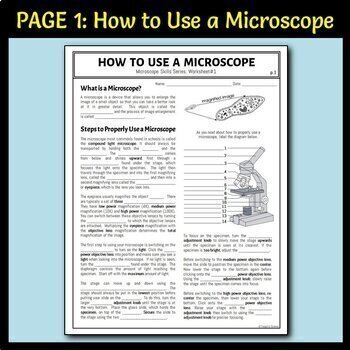




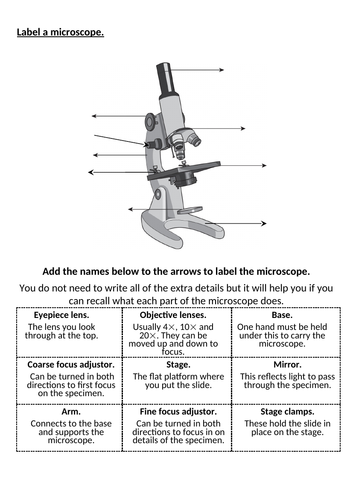
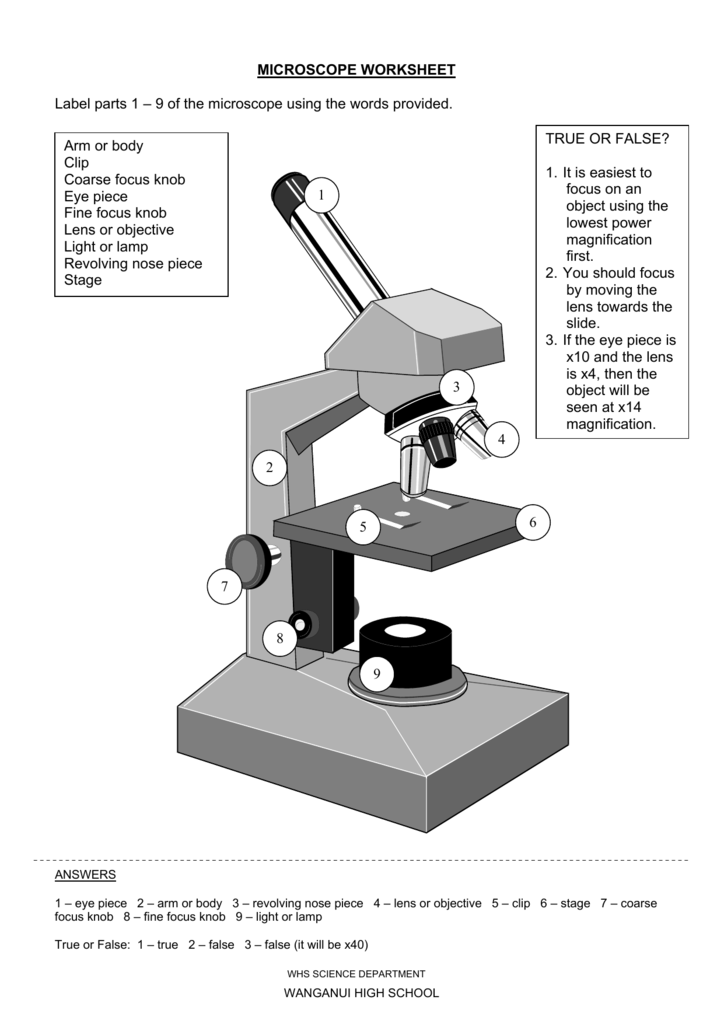

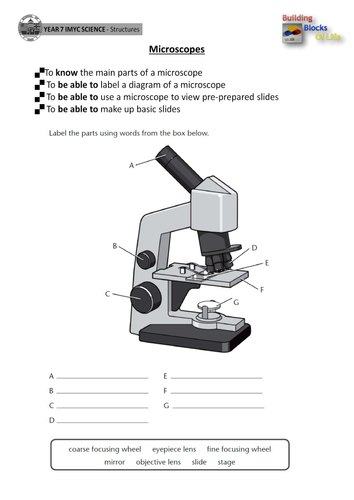
:max_bytes(150000):strip_icc()/microscopecolor3-58b978735f9b58af5c495abe.png)

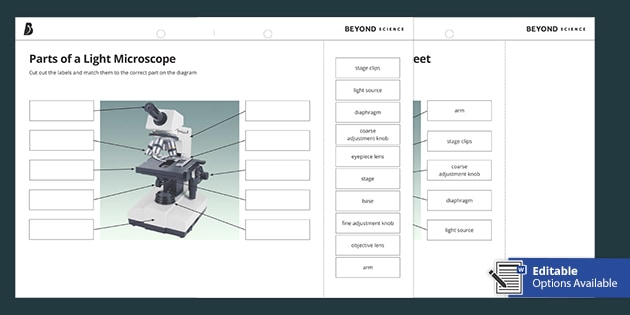


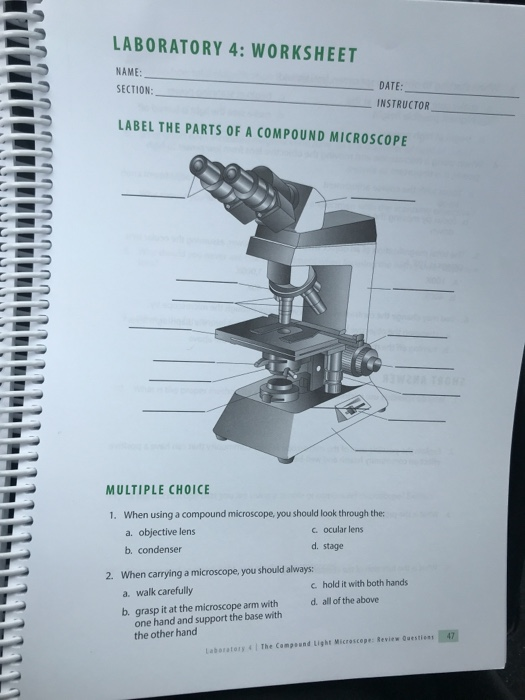

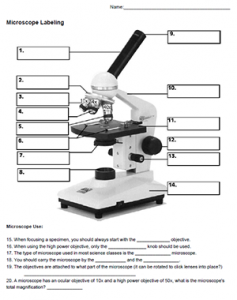

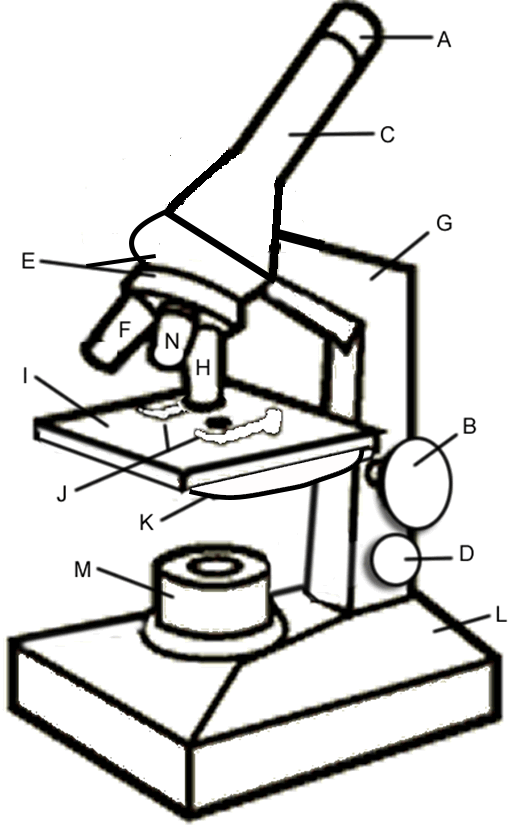
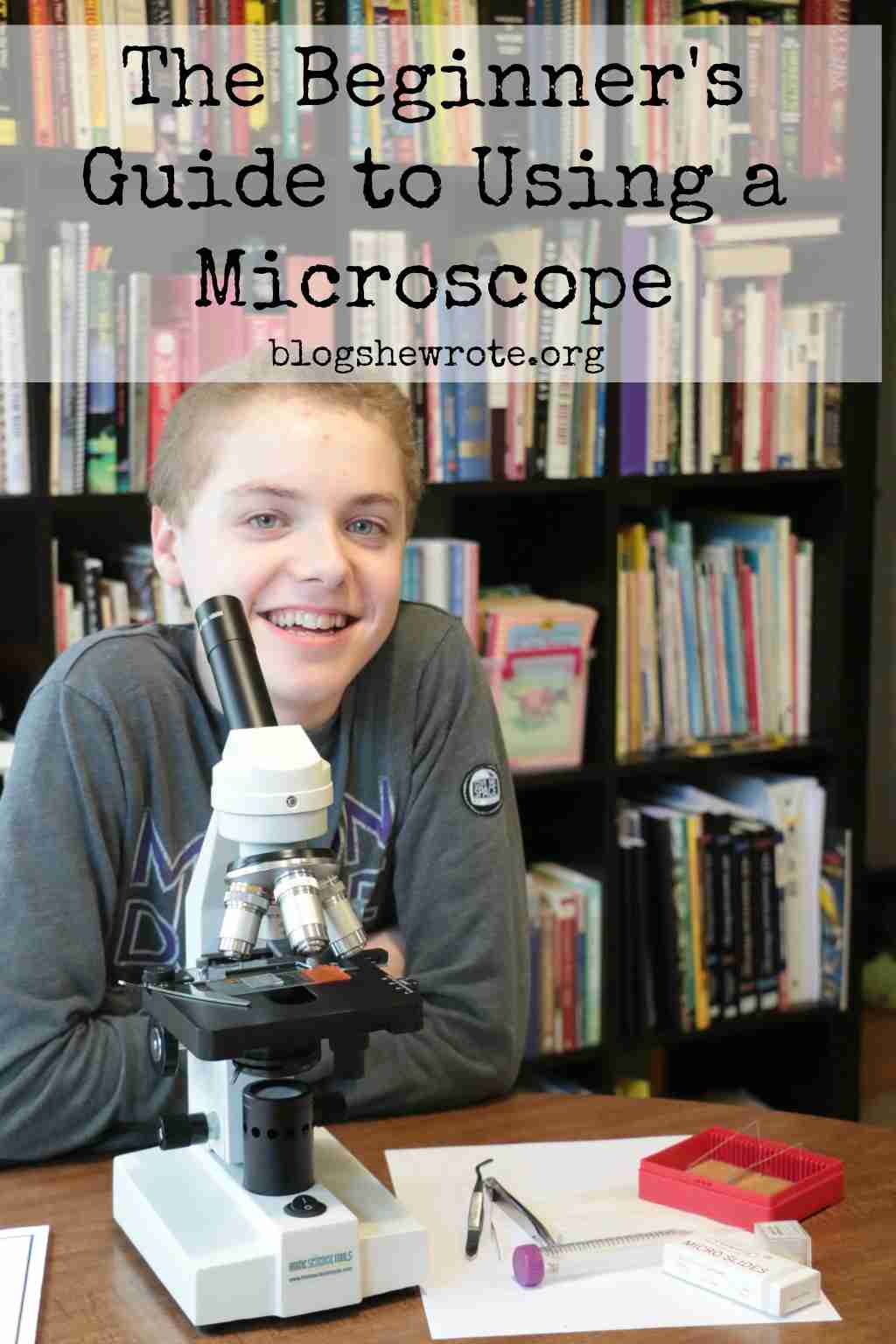
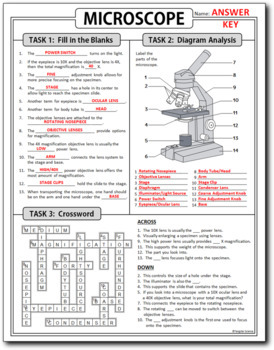

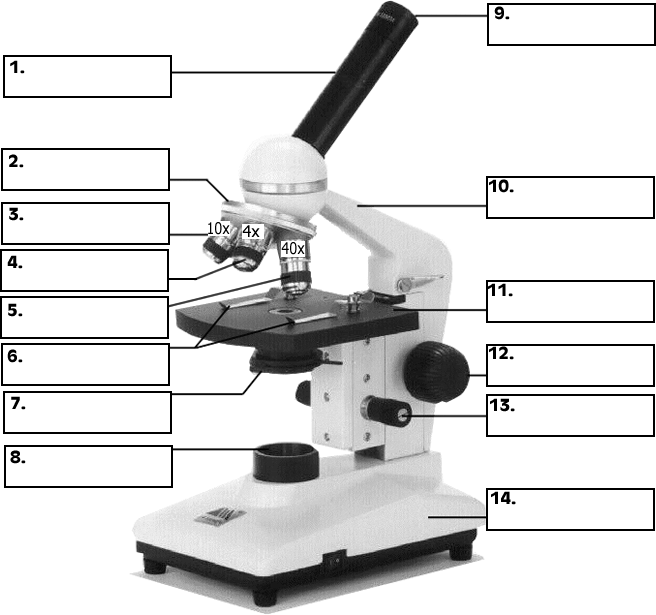

:max_bytes(150000):strip_icc()/microscopevocab-58b978803df78c353cdd31e4.png)
0 Response to "31 Using A Microscope Worksheet"
Post a Comment